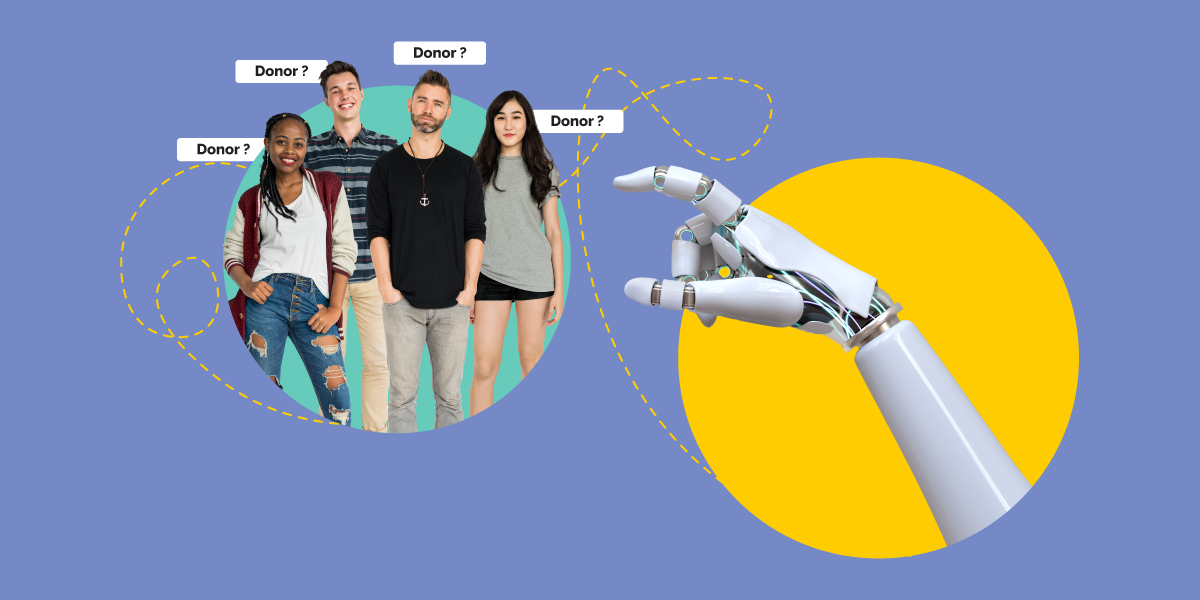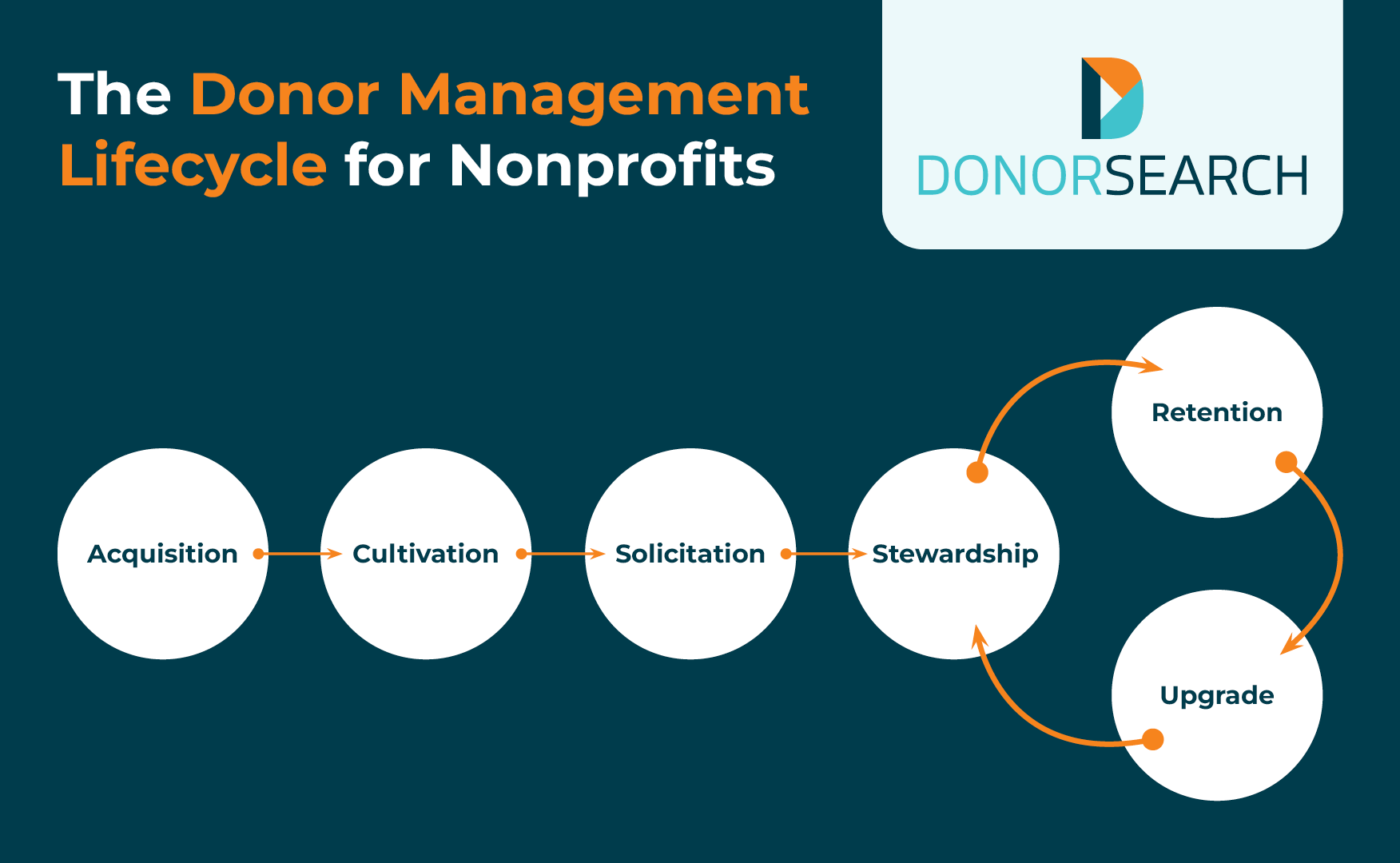Leveraging AI in Prospect Research: A Quick Nonprofit Guide

Artificial intelligence (AI) has become increasingly prevalent in many areas of personal and professional life, but it has especially penetrated the nonprofit sector. As of 2024, 58% of nonprofits reported integrating AI into their communications strategies, and 68% were using it for data analysis. Both of these rates exceed for-profit AI implementation—the results of the same survey for business-to-consumer (B2C) brands were 47% and 64%, respectively.
While AI can be useful in many areas of nonprofit operations and fundraising, one of the most effective is incorporating AI tools into your organization’s prospect research processes. As DonorSearch’s AI fundraising guide explains, by enhancing prospect research with AI insights, “you can take on donor cultivation and stewardship tasks with confidence, designing strategies that you know will resonate with individual prospects and focusing your efforts on the most probable potential donors.”
In this guide, you’ll learn all you need to know about leveraging AI in prospect research. Let’s get started by covering the best tools to use in this process before diving into how to apply them.
AI Tools to Use for Prospect Research
If your nonprofit has leveraged or considered leveraging AI before, you’ve likely come across two main categories of tools: generative and predictive. Generative AI produces original content like written copy and images, while predictive AI analyzes data to project trends and make actionable recommendations. The most effective nonprofit AI strategies involve generative and predictive tools working together.
For prospect research, there are three types of AI solutions—one predictive and two generative—that will enhance your process most effectively. They are:
- Predictive modeling. This AI tool uses machine learning to rate potential donors based on their likelihood of responding to outreach, making a major or planned gift, and becoming long-term supporters of your nonprofit. Then, it prioritizes your prospect lists based on these ratings so you can contact the most probable donors first, saving time and resources while setting your organization up to secure more impactful contributions.
- Prospect reporting. Once you’ve identified top prospects, this solution uses generative AI to compile essential screening data on each potential donor into a concise but detailed report. You can then reference this information as you develop tailored cultivation strategies for each prospect.
- Content generation. This is the type of AI tool you’re likely most familiar with—the kind that creates communication materials (email drafts, presentation outlines, etc.) in response to prompts. However, there are nonprofit-specific content generators on the market that integrate with predictive modeling tools, allowing you to more easily develop data-driven messages that align with your prospects’ preferences and your nonprofit’s brand.
These solutions don’t replace traditional prospect research tools like your organization’s CRM, third-party screening software, and publicly available data like SEC and FEC records. Instead, they’re meant to help you make sense of the information you gather from these sources and put it into practice more effectively.
Applying AI Prospect Research Insights to the Donor Lifecycle
To make the most of prospect research, the process and the information you find shouldn’t be placed on the back burner once you’ve identified donors. Instead, incorporate your prospect research data—and the insights your AI tools provide—at every stage of the donor lifecycle.
Here is a quick breakdown of how to do this:

- Acquisition: Use predictive modeling scores to prioritize outreach and prospect reports to choose the best channel to contact each potential donor
- Cultivation: Generate data-driven materials to guide initial prospect meetings, streamline follow-ups, and use insights to select the right ways to engage prospects in other ways before they give (volunteering, events, etc.)
- Solicitation: Select a data-backed gift amount and designation to present to each donor, and generate presentation materials and leave-behinds for one-on-one asks
- Stewardship: Choose methods and create materials to thank donors in a way that makes each of them feel appreciated
- Retention: Determine the impact information and stories that are most relevant to each donor and re-establish a regular, streamlined communication cadence to keep them engaged
- Upgrade: Pick the right time to ask each donor to level up their support and decide what upgrades would be reasonable to request.
As you can see, all three types of AI prospect research solutions play essential roles throughout donors’ entire journey with your organization. Continue gathering and analyzing data throughout the process as well so you always have the most up-to-date information on each prospect’s wealth and philanthropic activity to inform your strategy.
A Note on Using AI Responsibly
Although AI can greatly benefit your nonprofit when used effectively, it’s still an emerging field, and there are risks associated with using AI improperly. However, your organization can minimize these risks (and maximize the benefits of AI!) by committing to responsible AI use before you start incorporating it into your prospect research processes.
To help nonprofits like yours leverage AI responsibly, the Fundraising.AI collaborative has developed a framework you can use to inform your organization’s AI guidelines. Some of the areas it covers include:
- Data security. Especially when used for prospect research, nonprofit AI tools often process personal, sensitive information. As explained in Double the Donation’s donor data management guide, your organization should protect this information by working with trusted AI providers, implementing access controls, encrypting systems, and regularly updating your tools.
- Inclusiveness. Depending on the data your AI tools are trained on, they could introduce unintended biases into your decision-making and content creation. Actively combat these biases by carefully checking new data inputs and your solutions’ outputs to ensure they represent your organization’s community equitably and fairly.
- Transparency. Your nonprofit’s donors, board, sponsors, funders, and other stakeholders will likely be interested in how your team leverages AI and the steps you’re taking to ensure it’s used ethically. Clearly communicate your AI policies, methodologies, and results to these audiences to hold your nonprofit accountable to its community.
Additionally, because AI is constantly evolving, it’s essential to stay on top of developments in the field, whether they’re legal, ethical, or technical. Regularly update your policies and create continuous learning opportunities for your team to keep your AI practices—and, therefore, your prospect research activities—up to date.



